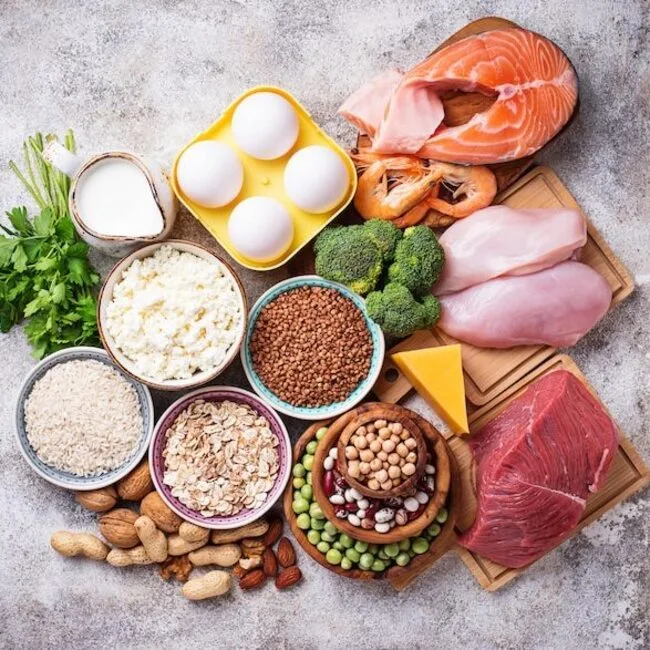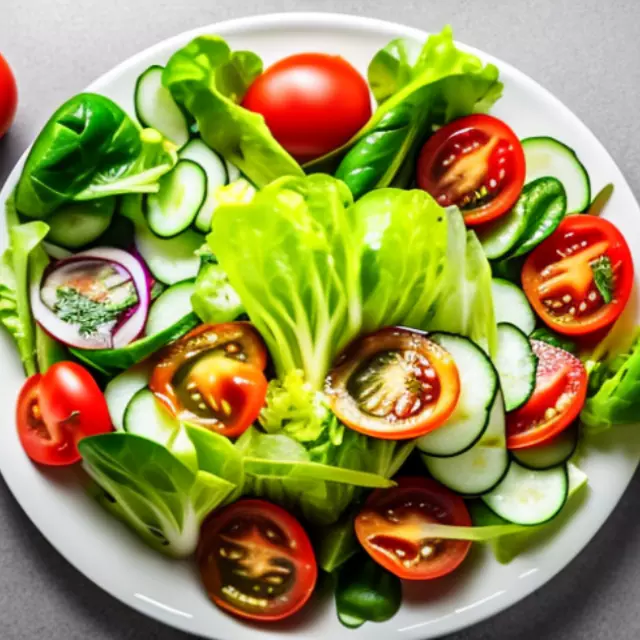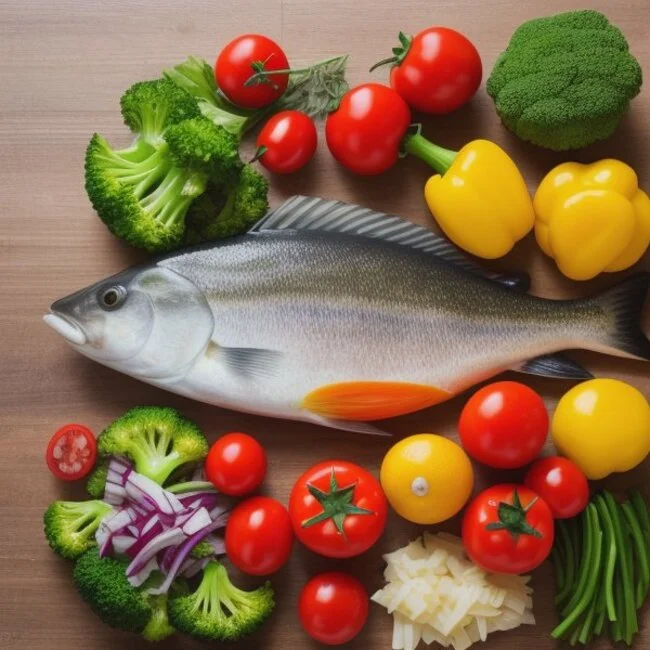Hello, dear readers! If you aspire to a healthy lifestyle and an ideal figure, you’ve come to the right place. My name is Roman, and I am a dietitian with years of experience. Today, let’s delve into the phenomenal “White Diet,” which not only helps shed excess weight but also brings a whole range of beneficial changes to the body. Get ready for an exciting journey to health and beauty!
The first step is to understand what the diet is. This approach to nutrition is based on consuming white-colored foods, ranging from a diet focused on white protein products to methods involving white wine. Don’t limit yourself—choose an approach that suits your preferences. However, remember that the duration of any variant should not exceed one week.
The “White Diet” is not confined to a single path. Depending on your tastes and goals, you can choose from popular variants like the white rice diet, white meat diet, white wine diet, or white bean diet. Each offers unique benefits, but adhering to the diet requires a responsible approach and following recommendations. Let’s move on to the fundamental principles of this remarkable dietary system.
Key Principles of the White Diet
Let’s explore the fundamental principles of the “White Diet.” The first and foremost rule is that white-colored foods should dominate your diet. This includes dairy products with no more than 4% fat, cereals like rice and oats, eggs, white beans, white cabbage, fish, and chicken fillet. This color-coded approach is not only diverse but also provides the body with essential nutrients.
Immerse yourself in the world of white foods that will be your faithful companions on this fascinating journey. Cottage cheese, homemade yogurt, cheese, kefir, fish, chicken meat, rice, oats, white beans—these are just a small part of what will form the basis of your diet. White fruits and berries will also complement your menu, adding freshness and taste.
It’s crucial to remember that the duration of any version of the diet should not exceed one week. This temporary restriction helps avoid deficiencies in essential elements, such as fats necessary for the normal functioning of the body. Plan your diet in advance to achieve maximum results in a short period. Let’s move on to the next section to learn how to organize your diet for a week.
Requirements of the White Diet
The secret to a successful “White Diet” lies in the variety of foods included in your diet. Don’t hesitate to add dairy products like cottage cheese, homemade yogurt, and cheese, as well as cereals, including rice and oats. Eggs, white beans, fresh cabbage, fish, and chicken fillet will provide your body with all the necessary nutrients.
To achieve the maximum effect of the diet, it’s essential to strictly limit the consumption of salt and sugar. These components can slow down the body transformation process, so exclude them from your diet during this period. This will help minimize water retention in the body and contribute to more effective weight loss.
Don’t forget about proper fluid intake throughout the day. Give preference to plain water, making it your main source of hydration. Tea and coffee are acceptable, but without adding sugar. Support your body by drinking 100-150 ml of regular room-temperature water 15 minutes before meals. This will help speed up metabolism and make the weight loss process more efficient. Water will also create a feeling of satiety, crucial for diet adherence. Let’s move on to the next stage, where we will discuss specific menus for different variations of the diet.
Meal Planning
To achieve the best results with the Diet, adhere to a regular meal schedule. Divide your day into 4-5 meals spaced roughly at equal intervals. This will help maintain a constant energy level, prevent hunger, and improve overall well-being. Let’s delve into how to plan your meals throughout the day.
Proper timing of meals plays a crucial role in the successful implementation of the diet. Keep in mind that the last meal should be no later than 3-4 hours before bedtime. This gives your body enough time to digest food and prevents the accumulation of excess calories during the night. Create your own meal schedule that suits your lifestyle to make the diet as convenient and effective as possible.
One of the mysteries of the “White Diet” is consuming 100-150 ml of regular room-temperature water 15 minutes before meals. This small pre-meal ritual not only improves your body’s water balance but also boosts metabolism, making the weight loss process more effective. Remember, water is your reliable ally on this exciting journey to the ideal shape. Move on to the next section, where we will examine sample menus for different diet variations.
Sample Menus for White Diet Variations
White Rice Diet
- – Breakfast: Boiled rice; a piece of chicken fillet.
- – Snack: Banana smoothie or a glass of milk and fruit.
- – Lunch: Boiled rice; salad with corn, carrots, tomatoes.
- – Dinner: Boiled rice; salad with peach and apple, dressed with yogurt.
Note: Distribute rice evenly, reducing its evening portion.
White Meat Diet
- – Breakfast: Chicken fillet and salad with non-starchy vegetables.
- – Snack: Salad with chicken fillet and apple.
- – Lunch: Buckwheat or rice porridge, chicken fillet.
- – Afternoon Snack: Pieces of boiled chicken fillet, carrot-potato mash.
- – Dinner: Chicken fillet, chicken broth, favorite non-starchy vegetables.
White Wine Diet
- – Breakfast: Wheat toast, cheese or cottage cheese, a glass of white wine.
- – Lunch: Wheat crisps, cheese or cottage cheese, a glass of wine.
- – Afternoon Snack: Several slices of cheese.
- – Dinner: A piece of dried bread, cheese, a glass of wine.
White Bean Diet
- – Breakfast: Hard cheese, wheat slice, kefir, yogurt, cottage cheese, or sour cream.
- – Lunch: Boiled white beans, vegetable salad.
- – Afternoon Snack: Fruit or a handful of berries.
- – Dinner: Boiled white beans, vegetable, mushroom, or chicken soup without potatoes.
Contraindications for the White Diet
Before starting the Diet, consider your individual reaction to the included foods. Food intolerance can cause negative reactions and complicate the weight loss process.
The “White Diet” is not recommended during pregnancy and lactation. During this period, the body needs additional nutrients that may not be fully provided by this diet.
Children should not follow the diet as their bodies require varied nutrition for proper growth and development.
People with chronic diseases in the exacerbation period should refrain from following the diet. It’s important to consider your health and discuss any dietary changes with a doctor.
Individuals with kidney diseases are not recommended to use the diet, based on high protein consumption, without consulting a doctor.
Advantages of the White Diet
One of the clear advantages of the diet is its high effectiveness in reducing weight. By following the recommendations, you can achieve noticeable results in a short period.
White foods in the diet contribute to the normalization of digestion and improvement of intestinal microflora.
In addition to weight loss, the Diet can lead to improved skin condition, making it smoother and healthier.
The protein in the diet products contributes to strengthening bone tissue and muscles, positively affecting overall physical fitness.
One undeniable advantage of the “White Diet” is the absence of hunger. Regular intake of diverse products keeps the body satiated, minimizing the desire for snacks.
Disadvantages of the White Diet
One potential drawback of the “White Diet” is the risk of slag accumulation in the body due to excess calcium found in protein products. To prevent this, it is recommended not to exceed the established calcium consumption norms.
The diet typically has a low fat content. It’s essential to remember that some fats are necessary for normal body functioning. Healthy fats play a key role in maintaining skin health, inflammatory processes, and overall well-being.
Long-term adherence to any version of the diet may lead to a deficiency of certain nutrients, such as fats and various micronutrients. It’s essential to observe the established diet duration and, if necessary, consult with a doctor.
Reapplication of the White Diet
To maintain achieved results and further control weight, it is recommended to repeat the diet no earlier than 3-4 weeks after completing the previous course. This allows the body the necessary time for recovery and maintaining a nutrient balance.
It’s important to note that the white wine diet may be more extreme due to the specificity of this method. Reapplying this version of the Diet should be delayed for a more extended period or choosing gentler options for reuse to avoid potential negative effects. As always, before deciding to reuse the diet, it is recommended to consult with a doctor or dietitian.
Conclusion
In conclusion, I want to emphasize that the “White Diet” offers various methods to achieve desired results in a short time. However, like any diet, it has its pros and cons. It’s crucial to approach the choice of a specific version of this diet responsibly, taking into account individual features and needs.
To maintain achieved results and avoid the yo-yo effect, it is recommended to gradually return to a regular diet during the post-diet period, introducing new foods with caution. It’s essential to maintain an active lifestyle and pay attention to the balance of nutrients.
Remember that any diet should be coordinated with your health and carried out under the supervision of a specialist. Don’t forget the importance of moderation and variety in nutrition to ensure the full functioning of the body.
FAQ
The Diet is based on consuming white-colored foods and can range from white protein products to incorporating white wine. It is innovative in its approach to maintaining a healthy lifestyle.
Favorite foods include dairy products, grains, eggs, white beans, cabbage, fish, and chicken fillet. Certain fruits and berries are also permitted.
The duration of any version of the Diet should not exceed one week to avoid potential negative effects on the body.
The diet includes a variety of foods such as dairy products, grains, eggs, white beans, cabbage, fish, and chicken fillet. It also requires limiting salt and sugar, with a preference for pure water.
It is recommended to consume food 4-5 times a day at equal intervals. Planning meal times plays a crucial role in achieving effective results.
Contraindications include food intolerance, pregnancy, lactation, childhood, and the presence of chronic diseases during exacerbation.
It is recommended to repeat the diet every 3-4 weeks, except for the white wine diet, which should be used with caution due to its extreme nature.















